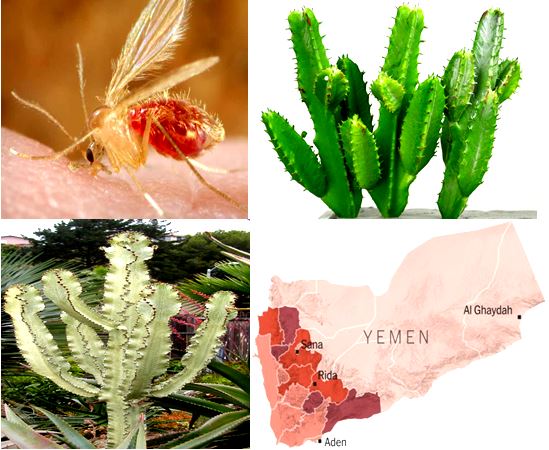IN VITRO ANTI-LEISHMANIAL ACTIVITY AGAINST CUTANEOUS LEISHMANIA PARASITES AND PRELIMINARY PHYTOCHEMICAL ANALYSIS OF FOUR YEMENI MEDICINAL PLANTS
Keywords:
Anti-leishmanial activity, Euphorbia cactus Ehrenb, Euphorbia ammak Forssk, Euphorbia inarticulate Schweinf, Pergularia tomentosa L, Yemeni medicinal plantsAbstract
Objective: Cutaneous leishmaniasis is one form of leishmaniasis that chiefly infected the poor sections of the society. The prototypical therapeutic interventions in vogue are handicapped due to toxicity and an alarming increase in drug resistance. Furthermore, the absence of vaccines has raised the quest for alternative therapies. So, the aim of our study was to assess the anti-leishmanial activity of Euphorbia cactus Ehrenb, Euphorbia ammak Forssk, Euphorbia inarticulate Schweinf, and Pergularia tomentosa L.
Methods: The extracts of plants were prepared by maceration method and by Soxhlet extractor. The extracts were dried and re-dissolved in 2% dimethyl sulfoxide (DMSO) 1% solvent. Leishmania spp. cells were then tested with serial concentrations (15.6 μgml-1 to 500 μg ml-1 ) of the extracts, using the 3-(4,5-dimethylthazolk-2-yl)-2,5-diphenyl tetrazolium bromide (MTT) assay. All experiments were performed in triplicate and analyzed by ANOVA test. The optical density values as measured by Enzyme-Linked Immunosorbent Assay (ELISA) were used to calculate the IC50 values.
Results: The results indicated that the methanolic latex extract of Euphorbia cactus Ehrenb, Euphorbia ammak Forssk had potent anti-leishmanial activity against the promastigotes of Leishmania spp. based on a dose-dependent response analysis. The IC50 values for Euphorbia cactus Ehrenb and Euphorbia ammak Forssk after 24h incubation against Leishmania spp. promastigotes were less than <15.6 μgml-1. Furthermore, the phytochemical analysis of methanolic extracts showed the presence of alkaloids, phytosterols, phenols, saponins, and flavonoids in which these components have been proven previously to be the active compounds against Leishmania parasite.
Conclusion: In conclusion, the present study reveals that latex extract of Euphorbia cactus Ehrenb and Euphorbia ammak Forssk contain active compounds that have anti-leishmanial activity, which could serve as an alternative agent in the treatment of Cutaneous leishmaniasis, but further studies would, therefore, be needed to assess the activity of these materials of this plants in vivo clinical response and study their toxicity on cell lines.
Peer Review History:
Received 27 May 2018; Revised 8 July; Accepted 27 September; Available online 15 September 2018
Academic Editor: Dr. Ali Abdullah Al-yahawi , Al-Razi university, Department of Pharmacy, Yemen, alyahawipharm@yahoo.com
, Al-Razi university, Department of Pharmacy, Yemen, alyahawipharm@yahoo.com
Reviewer(s) detail:
Dr. Lucky Llegbosi Nwidu , University of Port Harcourt, Nigeria, menelucky@yahoo.com
, University of Port Harcourt, Nigeria, menelucky@yahoo.com
Dr. George Zhu , Tehran University of Medical Sciences, Tehran, Iran, sansan4240732@163.com
, Tehran University of Medical Sciences, Tehran, Iran, sansan4240732@163.com
Downloads

Published
How to Cite
Issue
Section

This work is licensed under a Creative Commons Attribution-NonCommercial 4.0 International License.










 .
.